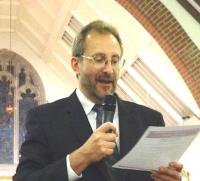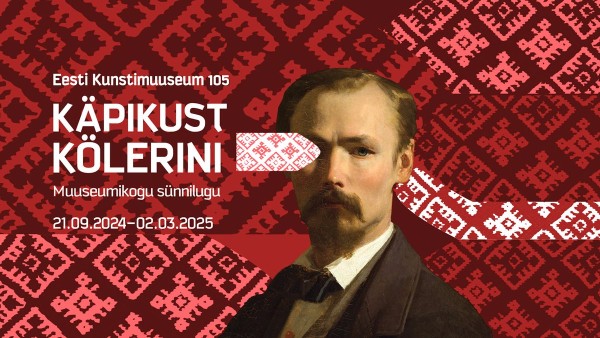P.C. HO THEATRE
TORONTO

Norman-Illis Reintamm. Pilt:EL
musicians' eyes is the pinnacle of music making.
Norman Reintamm (Conductor of the Cathedral Bluffs Symphony Orchestra
in Toronto), together with Helga Tucker (a leading singing teacher in
Toronto) mused about the possibility of doing a concert performance of
this work a couple of years ago. Norman and Helga (working very
closely within the context of an informal "opera studio" under the
auspices of the C.B.S.O.) realized that they had all of the elements
in place to put Rosenkavalier on stage.
Together they decided to take the plunge and Norman programmed "Rosie"
into the 2011-12 season of his Orchestra.
With the help of Michael Rose (guest repetiteur for this production),
Norman and Helga spent much of this season working with their charges
in preparing their parts. Evenings, Sunday afternoons, and lunch hours
were spent in practise studios. It was essential that the singers not
only understood the notes, but also the technique and music behind the
notes in order to feel totally comfortable in bringing this music to
the stage. Not only were there moments of tears, but also many unique
"Ah-ha" moments when a phrase of a few notes would suddenly take
shape.
The Cathedral Bluffs Symphony Orchestra is the resident orchestra at
the P.C. Ho Theatre in Toronto. At full strength it consists of 90-100
musicians. Recent performances have included Verdi Requiem, Mahler 2,
and Mahler 5. One of its mandates is to encourage young musicians to
aspire to the best of their abilities. Der Rosenkavalier not only
would inspire the musicians of the Orchestra, but also give a chance
for young Canadian singers to aspire to a piece, which is so rarely
done.
Advertisement / Reklaam
Advertisement / Reklaam
The three leading ladies were Iris Rodrigues (Sophie), Chelsea Säuer(Octavian), and Marion Samuel-Stevens (Marschallin). On stage they
worked as a wonderful musical team within the ebb and flow of live
opera. The feeling after the performance was one of joy, but with a
touch of sadness. When such a massive piece of work is done and
consigned to the ethers after one performance, it is really tough on
all of the performers.
There was a very well known jazz musician sitting in the audience. At
the break he was heard to have said that maybe jazz musicians don't
really have the market cornered with chromaticism. He was inspired by
the brilliance of the chordal progressions in this score, stuff that
jazz musicians should take a closer look at. The orchestra was also
delighted to bring this piece to fruition. Something for them that was
quite out of the ordinary and a challenge, to which they could aspire.
Rosenkavalier is a piece full of emotions. Hopefully these were
transmitted from the musicians on stage to the audience. And, as a
result, new lovers of Richard Strauss and the Rosenkavalier may have
been born.


